New research from Dartmouth provides the first evidence that the Arctic’s frozen soil is the dominant force shaping Earth’s northernmost rivers.
Tag: Permafrost
Boom in “ice ivory” trade of mammoth tusks presents new threat to elephants and environment
A new study by the University of Portsmouth warns the close similarities between the tusks of elephants and mammoths poses threats to conservation and environment efforts.
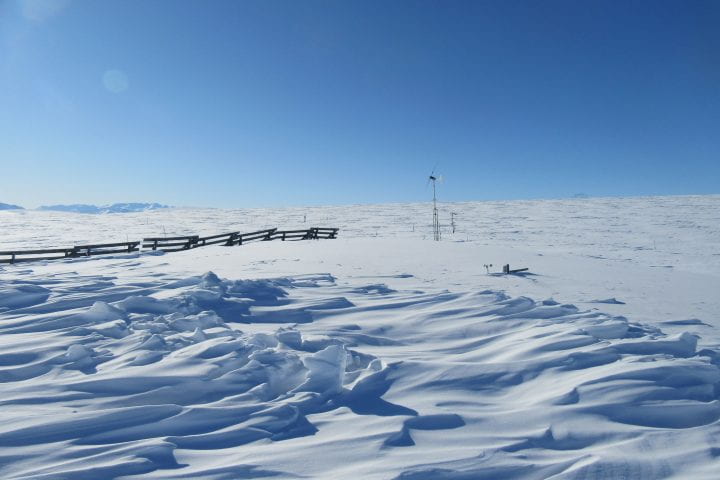
UC Irvine scientists say deepening Arctic snowpack drives greenhouse gas emissions
Human-caused climate change is shortening the snow cover period in the Arctic.
Study finds sinking tundra surface unlikely to trigger runaway permafrost thaw
Oak Ridge National Laboratory scientists set out to address one of the biggest uncertainties about how carbon-rich permafrost will respond to gradual sinking of the land surface as temperatures rise. Using a high-performance computer simulation, the research team found that soil subsidence is unlikely to cause rampant thawing in the future.
New Technique Maps Large-scale Impacts of Fire-induced Permafrost Thaw in Alaska
For the first time, researchers have developed a machine learning-based ensemble approach to quantify fire-induced thaw settlement across the entire Tanana Flats in Alaska, which encompasses more than 3 million acres. They linked airborne repeat lidar data to time-series Landsat products (satellite images) to delineate thaw settlement patterns across six large fires that have occurred since 2000. The six fires resulted in a loss of nearly 99,000 acres of evergreen forest from 2000 to 2014 among nearly 155,000 acres of fire-influenced forests with varying degrees of burn severity. This novel approach helped to explain about 65 percent of the variance in lidar-detected elevation change.
Scientists find iron cycling key to permafrost greenhouse gas emissions
The interaction of elemental iron with the vast stores of carbon locked away in Arctic soils is key to how greenhouse gases are emitted during thawing and should be included in models used to predict Earth’s climate, Oak Ridge National Laboratory scientists found.
Global warming in the Arctic increases megafires on the permafrost
The Siberian Arctic experienced an unusual number of fires in 2019 and 2020.
Burping bacteria: Identifying Arctic microbes that produce greenhouse gases
As greenhouse gases bubble up across the rapidly thawing Arctic, Sandia National Laboratories researchers are trying to identify other trace gases from soil microbes that could shed some light on what is occurring biologically in melting permafrost in the Arctic.Sandia bioengineer Chuck Smallwood and his team recently spent five days collecting lakebed soil and gas samples.
Investigating the Dynamics that Reshape Permafrost Environments
Researchers using monitoring data from Alaska permafrost found that vegetation and the snowpack that accumulates in winter control the temperatures below ground and thus the flow of water in the ground. By highlighting the link between above- and belowground properties and processes, these results will help improve scientists’ predictions of how the Arctic interacts with overall climate change.
George Washington University Experts Available for Interviews on Climate Change, Air Pollution and Sustainability
WASHINGTON (April 16, 2021) — For Earth Day 2021, President Joe Biden has invited 40 world leaders to take part in a virtual summit to focus on solutions for climate change and other environmental problems. The George Washington University has experts who…
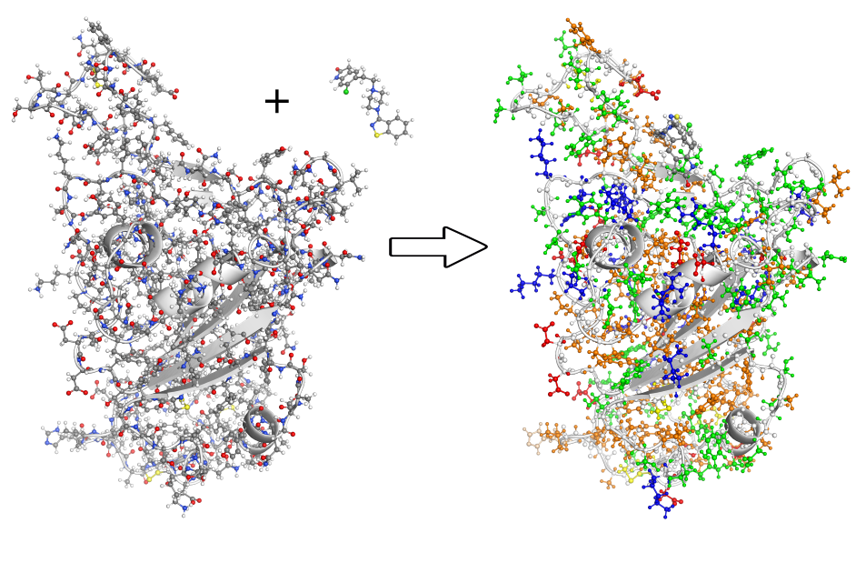
Story tips: Modeling COVID, permafrost lost and taking the heat
ORNL story tips: Modeling COVID, permafrost lost and taking the heat
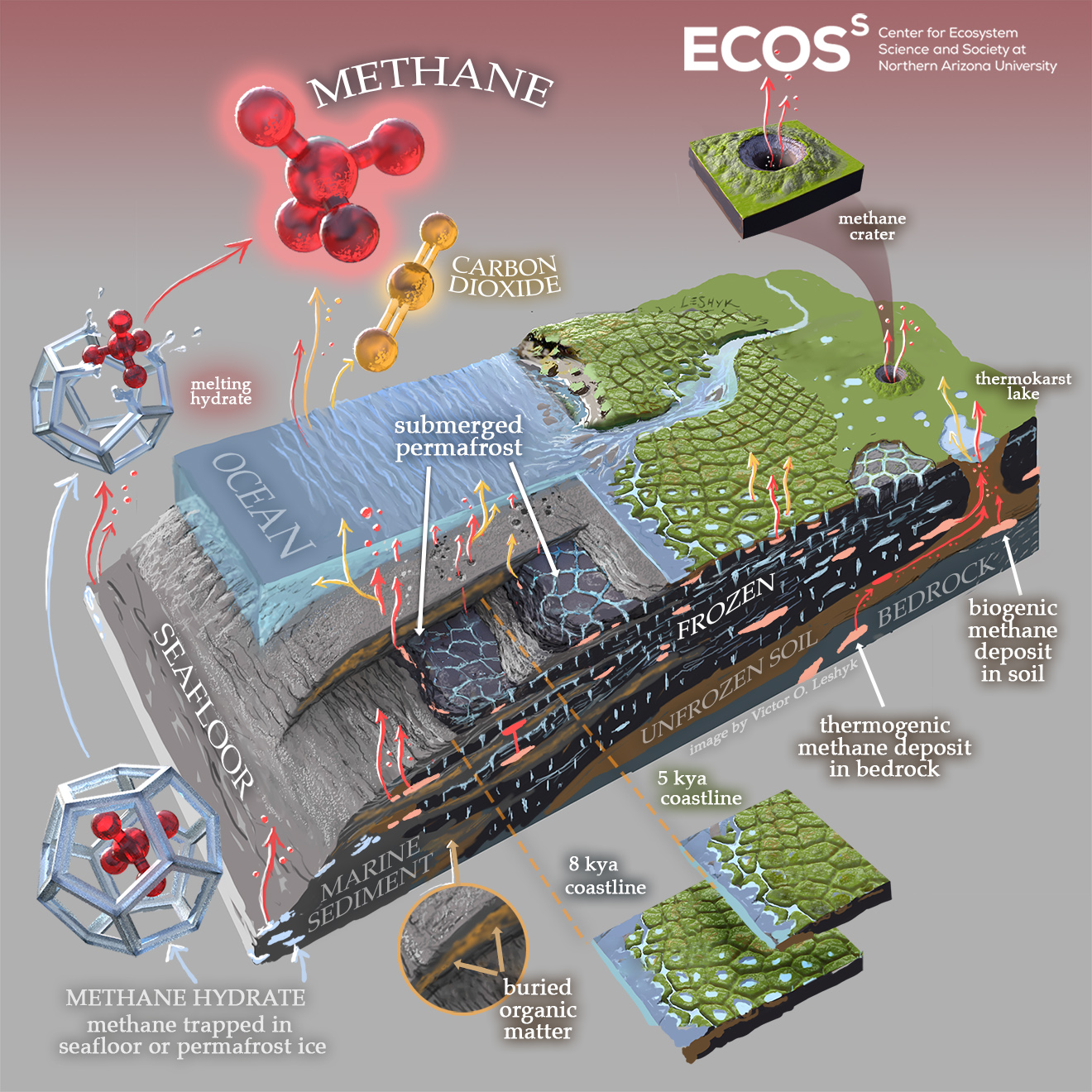
International research team begins uncovering Arctic mystery
According to 25 international researchers who collaborated on a first-of-its-kind study, frozen land beneath rising sea levels currently traps 60 billion tons of methane and 560 billion tons of organic carbon. Little is known about the frozen sediment and soil — called submarine permafrost
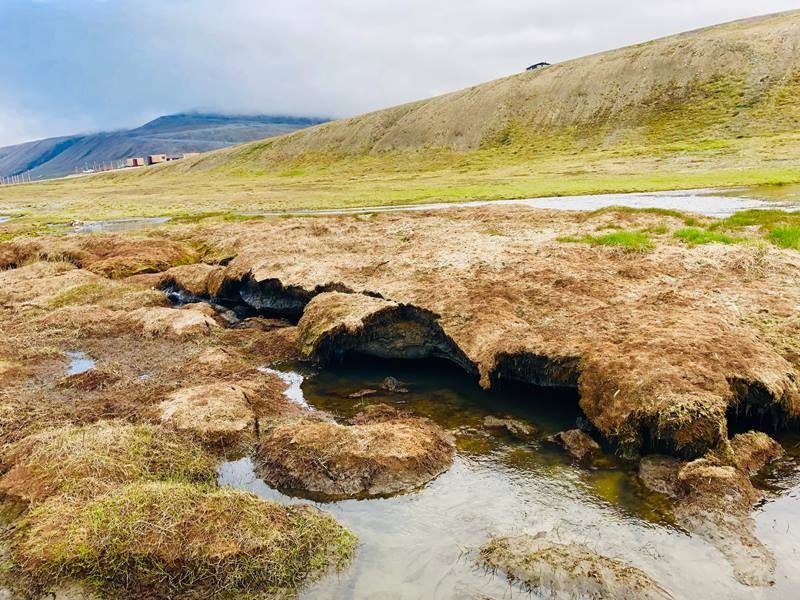
Young Permafrost Provides New Insights on Climate Change
Cold temperatures keep the microorganisms in permafrost dormant. Thawing could cause these microorganisms to degrade organic material, releasing carbon dioxide and methane. Scientists have now studied the diversity and metabolic capacity of microbial communities in a unique permafrost environment.
UNH Receives NSF Grant to Research Carbon Interactions in Thawing Arctic
The University of New Hampshire will lead research as part of a $1.5 million award from the National Science Foundation to better understand how interactions between plants, microbes and soil minerals in permafrost, a subsurface layer of frozen soil covering a fourth of the Northern Hemisphere, stimulate the release of carbon which adds to the warming Arctic.
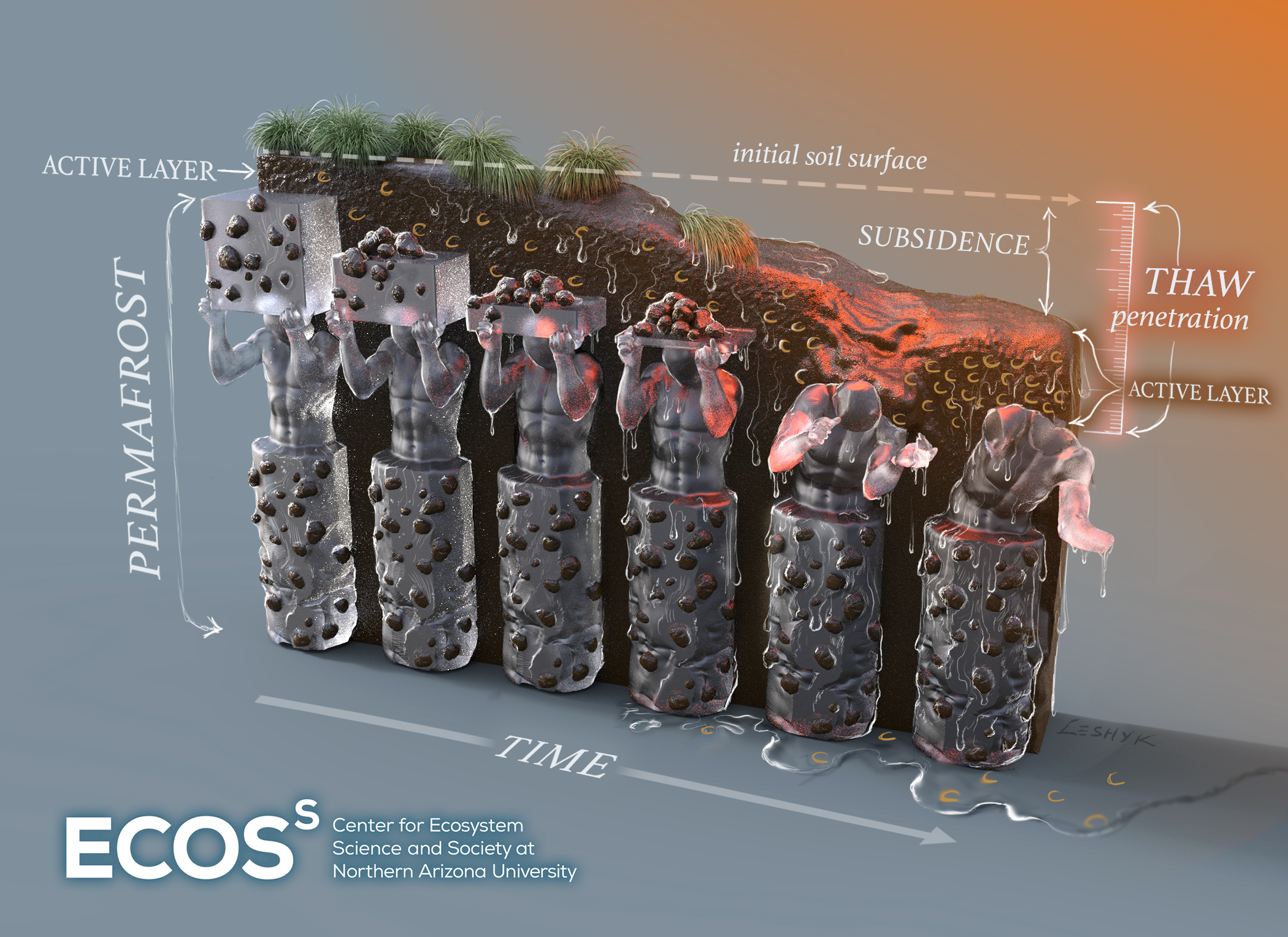
Stocks of vulnerable carbon twice as high where permafrost subsidence is factored in, new research finds
Northern Arizona University researchers Elaine Pegoraro, Christina Schädel, Emily Romano, Meghan Taylor and Ted Schuur collaborated on the study, which suggests that traditional methods of permafrost thaw measurement underestimate the amount of previously-frozen carbon unlocked from warming permafrost by more than 100 percent.
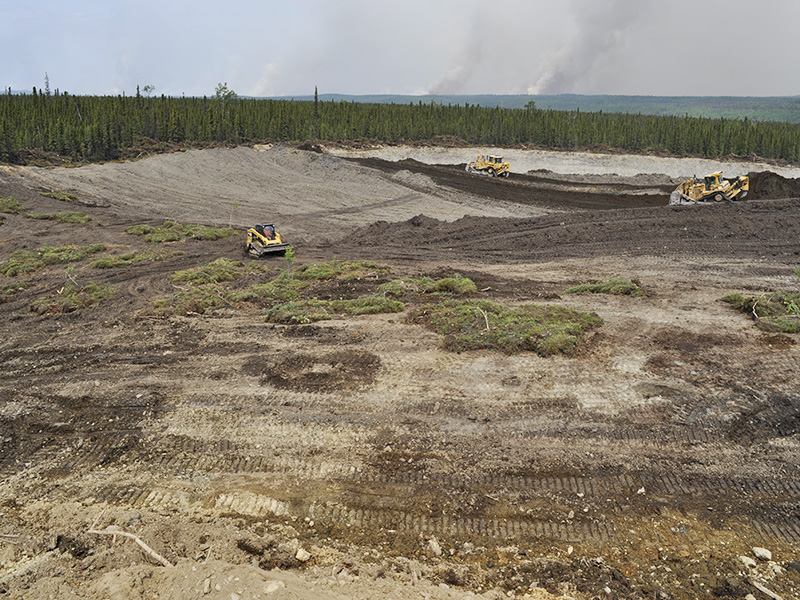
What happened to Alaska’s soils during the 2019 fires?
Protecting the permafrost after a record fire season
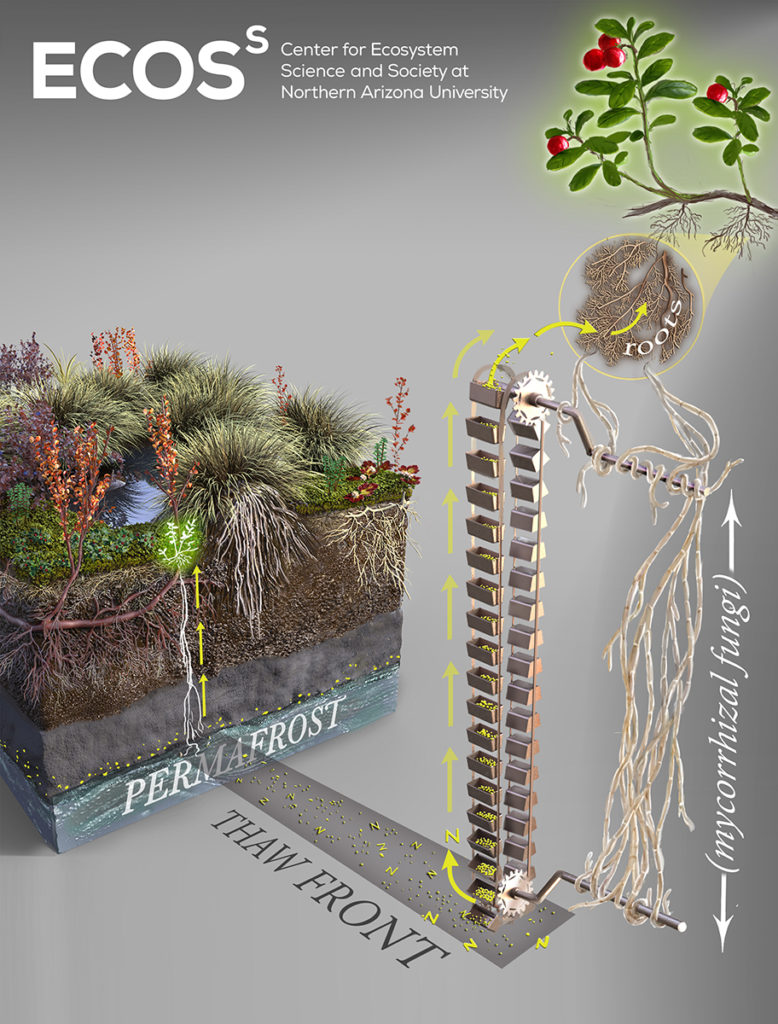
Connector fungi offer new clues to fate of nitrogen in warming tundra
Northern Arizona University professors Rebecca Hewitt and Michelle Mack authored the study, published this week in New Phytologist, which could have implications for researchers and computer models that predict where nitrogen and carbon go at both regional and global levels.